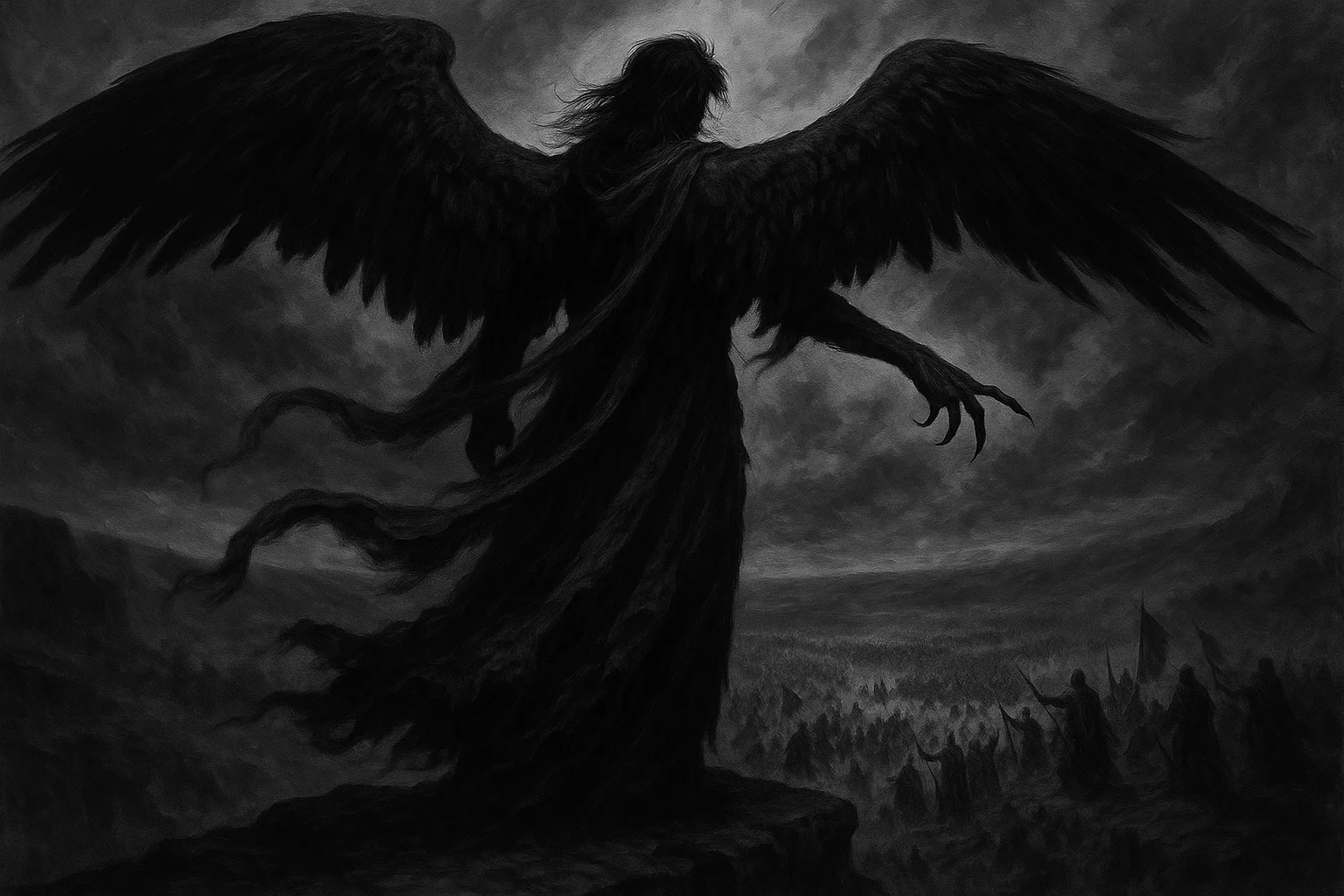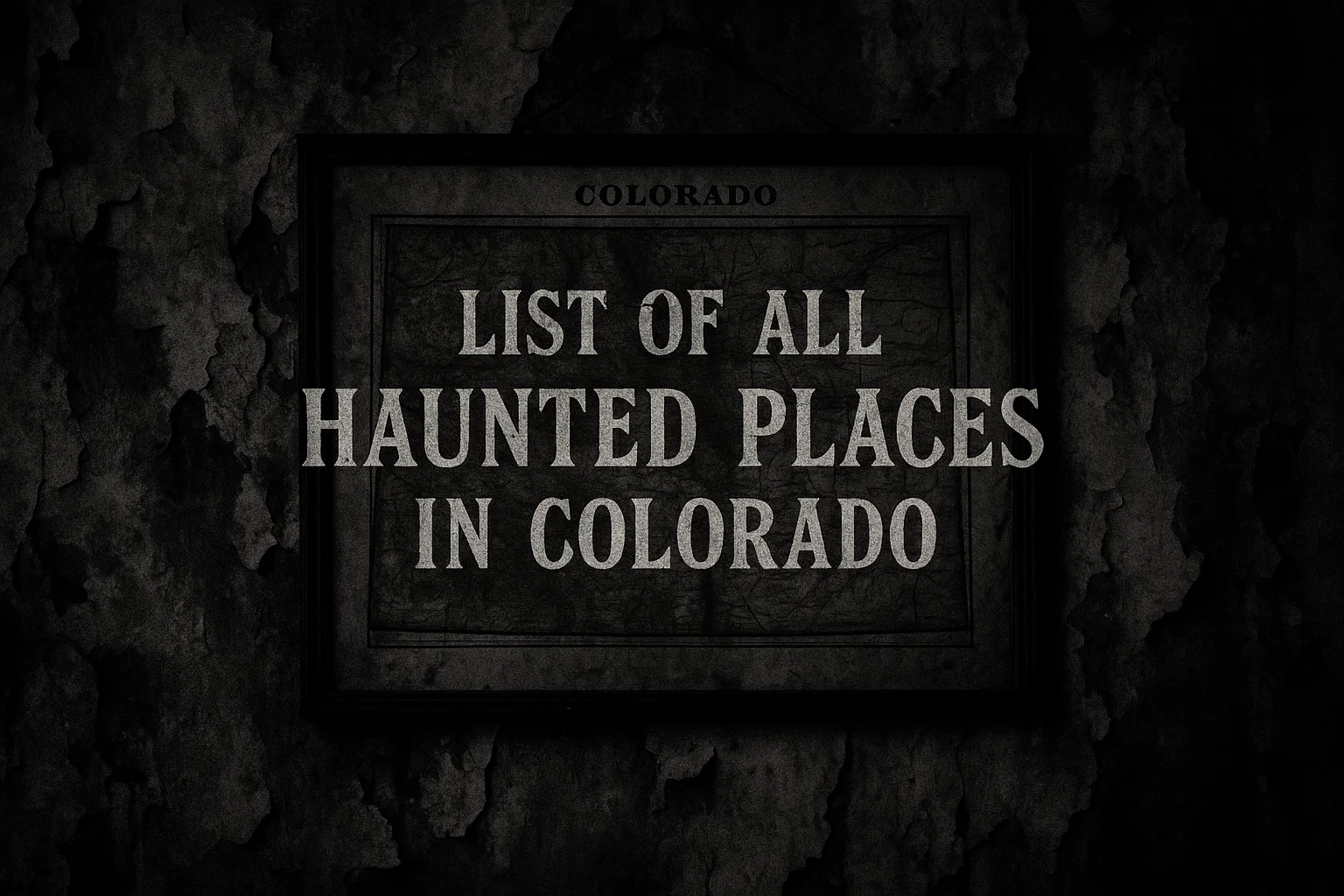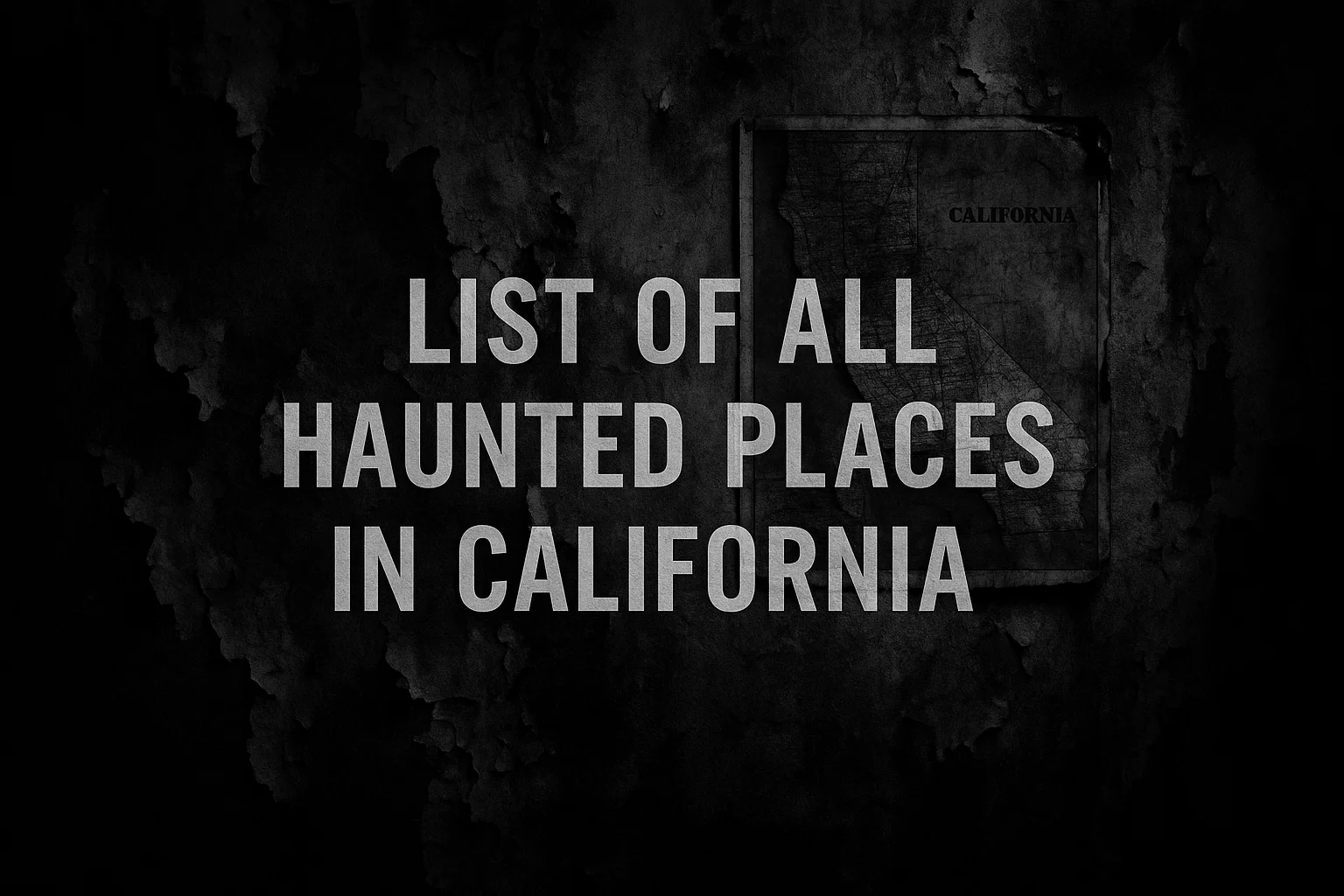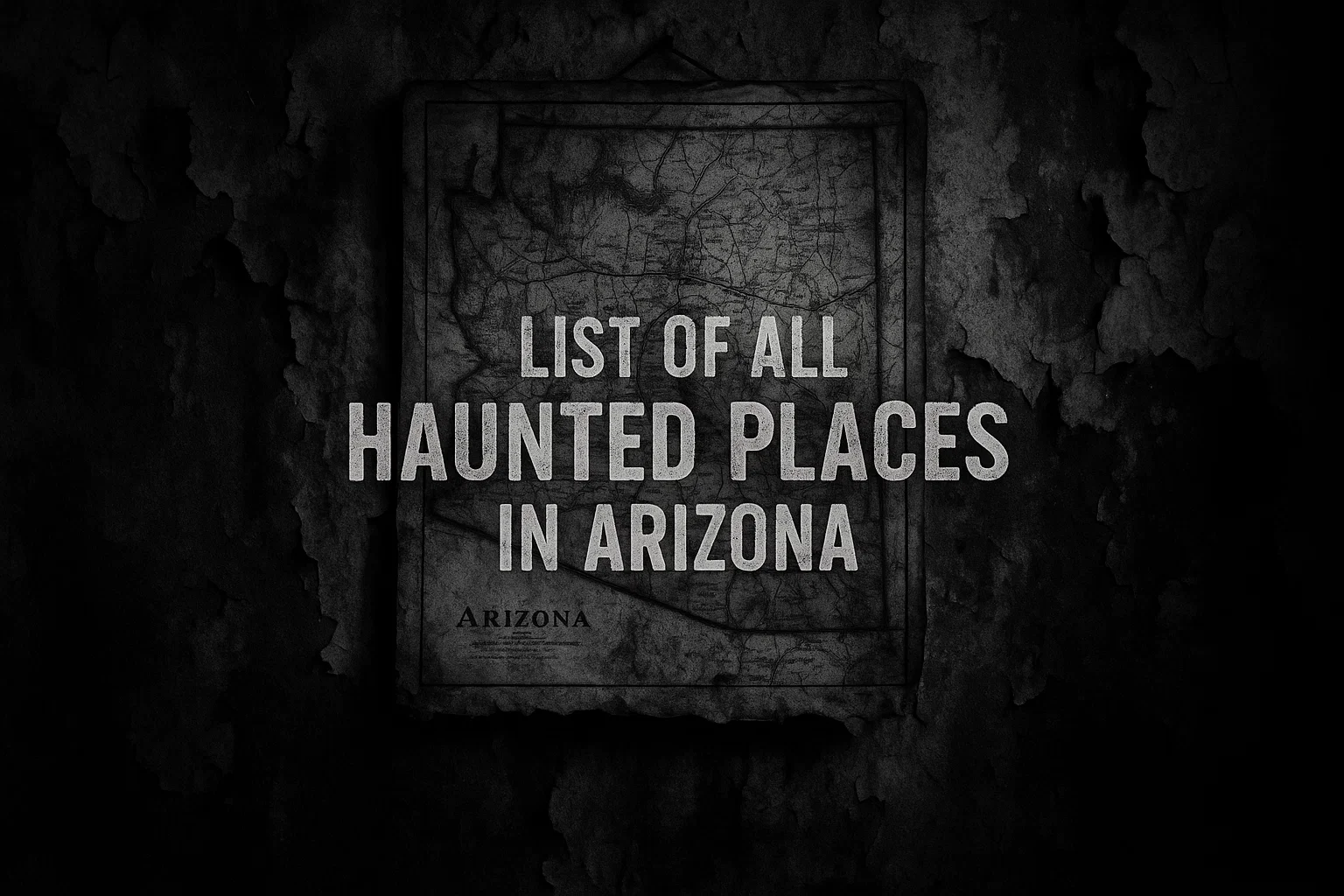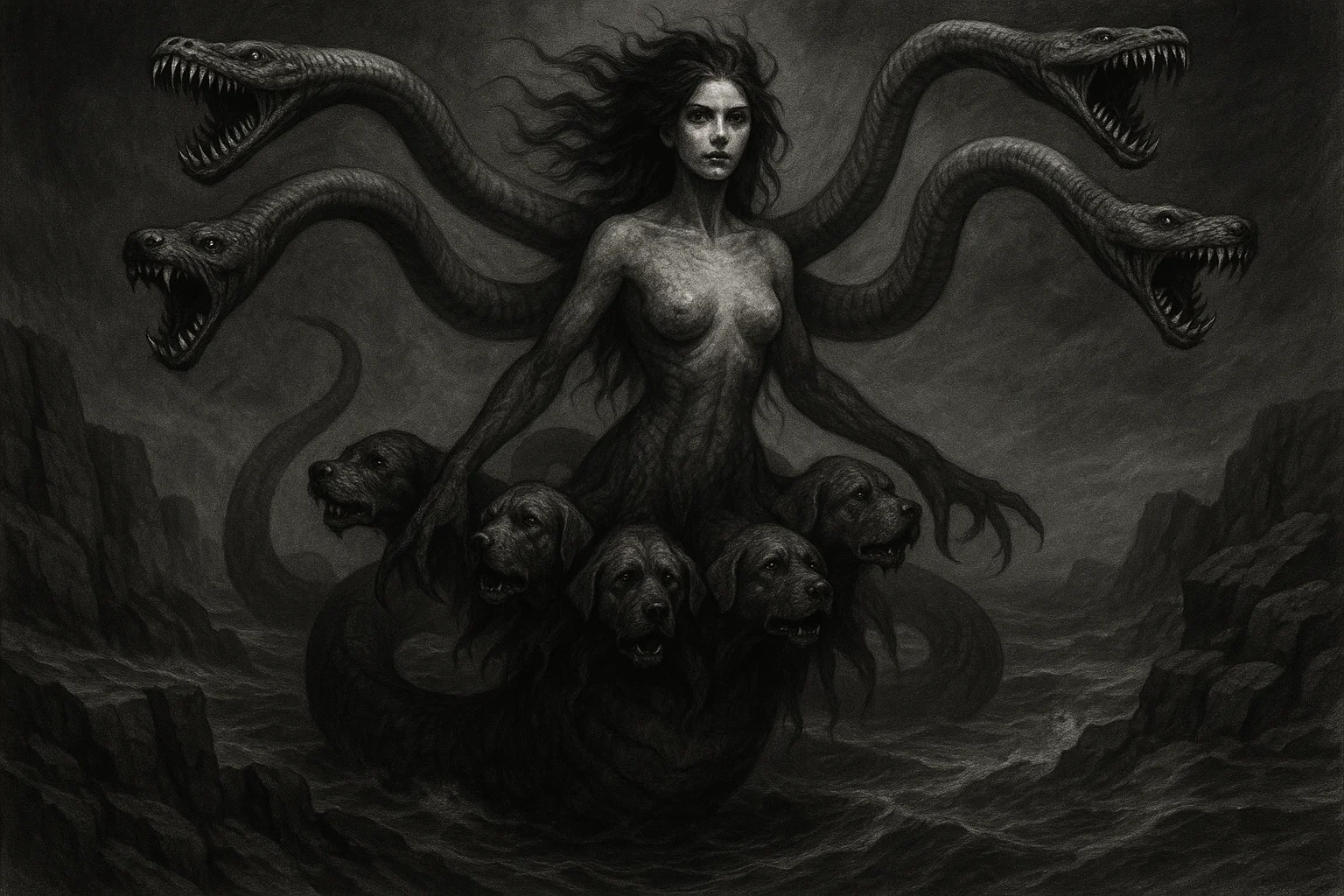Have you ever wondered who lurks behind the trials that shatter human resolve, whispering temptations that lead souls astray into the abyss of sin? Mastema, the demon of unyielding hostility, emerges from ancient texts as a force of relentless persecution, challenging the faithful and sowing seeds of corruption across generations.
This enigmatic entity, known as the prince of enmity, raises haunting questions: What if the greatest tests of faith are orchestrated by a being granted power to corrupt? How does one confront a demon whose very essence embodies hatred, turning divine commands into instruments of downfall?
Delving into the mysteries of Mastema unveils a figure woven into the fabric of Jewish apocrypha and Second Temple Judaism, where he personifies the cosmic struggle between obedience and rebellion. As the chief antagonist in narratives of temptation and destruction, Mastema compels us to question the origins of evil: Is enmity an inherent force, or a permitted shadow that amplifies human frailty?
Summary
Key Information
| Category | Details |
|---|---|
| Name | Mastema, Mastemah, Mansemat, Prince Mastema, Angel of Mastema, Sar ha-Mastemah |
| Title | Prince of Enmity, Chief of Spirits, Angel of Hostility, Adversary, Accuser, Angel of Disaster, Father of All Evil, Flatterer of God |
| Gender | Male |
| Role | Tempter of souls, tester of faith, executor of divine punishments, leader of evil spirits, inciter of sin, idolatry, and bloodshed, opponent to prophets and the righteous, persecutor of the disobedient |
| Hierarchy | High-ranking adversarial angel; chief over Nephilim spirits and one-tenth of fallen demons; semi-autonomous under divine authority but commands legions for corruption; equated with chief satanic figures in dualistic texts |
| Servitors | Nephilim spirits (demonic offspring of Watchers and humans); one-tenth of the post-Flood demonic horde; unnamed evil spirits deployed for temptation, destruction, and spiritual erosion |
| Superior Demon | Divine authority (Yahweh grants permissions); potentially aligned with or equated to overarching adversarial princes like Belial in some traditions |
| Powers | Temptation through whispers of doubt; hardening hearts against redemption; commanding omens and plagues; inciting generational sin; testing faith via orchestrated trials; manipulating events to foster idolatry and violence |
| Appearance | Shadowy angelic form with darkened wings symbolizing corrupted grace; stern visage with piercing, coal-like eyes; elongated, claw-like fingers for gesturing corruption; aura of flickering shadows that repel light |
| Etymology | Rooted in Hebrew “mastemah” (hostility, hatred); from verb “satam” (to be adverse); Hiphil form “mastim” implying active enmity; linked to persecution and opposition in prophetic contexts |
| Associated Figures | Abraham (instigator of Isaac’s trial); Moses (attempted slayer); Noah (opposer of post-Flood purity); Pharaoh (heart-hardener); fallen Watchers; Nephilim; equated with Satan, Belial, Samael |
| Weaknesses | Restricted by divine permissions—cannot exceed granted bounds; bound during redemptive moments like the Exodus; repelled by rituals of purity, unwavering faith, and prophetic blessings |
| Opposing Angel/Saint | Archangel Michael (heavenly warrior against adversity); Prince of Light (in dualistic oppositions); direct divine interventions; faithful figures like Abraham, Moses through covenantal obedience |
| Equipment/Tools | Legions of spirits as agents; ravens as omens of ruin; ethereal chains for binding or unleashing forces; symbolic seals commanding corruption |
| Pantheon | Abrahamic traditions (Jewish pseudepigrapha, Second Temple texts); influences in Enochic lore, Qumran dualism; parallels in adversarial figures across ancient Near Eastern myths |
Etymology
The name Mastema originates from the ancient Hebrew term “mastemah” (מַשְׂטֵמָה), which directly translates to “hostility,” “hatred,” “enmity,” or “persecution,” encapsulating a profound sense of opposition that disrupts divine harmony.
This linguistic root positions Mastema as more than a mere label; it defines his core identity as an active force of adversity in the cosmic order. Scholars note its appearance in biblical passages like Hosea 9:7-8, where “mastemah” describes prophetic visions tainted by enmity, highlighting its early use as a descriptor of spiritual conflict.
Delving deeper, “mastemah” derives from the verb “satam,” meaning “to be adverse” or “to act inimically,” with the Hiphil participle “mastim” emphasizing causative action—Mastema doesn’t just embody hatred; he provokes it.
This etymological structure suggests a prosecutorial role, akin to a celestial accuser who fosters division. In pseudepigraphic texts, the title “sar ha-mastemah” or “prince of enmity” elevates this to a hierarchical designation, blending noun and proper name to signify leadership over adversarial forces.
Further analysis reveals Semitic parallels, where similar roots in Akkadian and Aramaic denote legal adversaries or opponents in judicial contexts, reinforcing Mastema‘s image as a divine courtroom figure.
The term’s dual use—as both a common noun for “hostility” and a personified entity—illustrates its evolution from abstract concept to demonic archetype during the Second Temple era. In Qumran literature, “angel of mastema” appears alongside Belial, merging enmity with destruction, a fusion that underscores the word’s thematic depth.
The persistence of “mastemah” in fragments like the Damascus Document, often with the definite article “ha-,” indicates a class of “angels of mastema,” expanding the etymology to encompass a broader demonic category.
This fluidity reflects theological adaptations, where “mastemah” symbolizes not just personal animosity but systemic opposition to righteousness. Ultimately, Mastema‘s name weaves a narrative of deliberate antagonism, essential to understanding evil as an orchestrated challenge within ancient Jewish thought.
Comparative linguistics ties “mastemah” to broader Near Eastern motifs of conflict, such as Ugaritic terms for strife, suggesting cross-cultural influences on Hebrew demonology. In medieval interpretations, like the Book of Asaph, the name retains its adversarial essence, linking back to Jubilees’ portrayals.
This rich etymological tapestry frames Mastema as the embodiment of enmity, a linguistic cornerstone for exploring temptation’s roots in human experience.
You May Also Like: Who Is Dagon? The Demon That Rose from Ancient Seas
What Does the Demon Mastema Look Like?
Mastema appears in ancient lore as a towering, ethereal being, his form a twisted parody of angelic splendor marred by shadows that cling like a shroud of perpetual night.
His wings, vast and obsidian-black, span wide with feathers that seem to absorb light, symbolizing the fall from grace and the corruption he spreads. Eyes glowing like embers in a dying fire pierce through illusions, reflecting the inner turmoil he inflicts on tempted souls.
Distinct traits mark his menacing presence: a gaunt face etched with lines of eternal scorn, lips curled in a perpetual sneer that whispers deceit. His hands, elongated with talon-like nails, gesture toward paths of ruin, while a faint, acrid mist trails his movements, evoking the stench of decayed faith.
In visions, Mastema shifts subtly—no grotesque monster, but a seductive prosecutor whose form adapts to exploit vulnerabilities, blending allure with terror to ensnare the unwary.
Historical and Mythological Background
The origins of Mastema trace back to the turbulent era of Second Temple Judaism, around 160-150 BCE, emerging in apocryphal texts amid Hellenistic influences and sectarian strife.
Rooted in Enochic traditions of fallen angels and Watchers, Mastema personifies the escalation of evil from abstract force to named adversary, reflecting theological efforts to reconcile divine sovereignty with human suffering. His mythology draws from Near Eastern motifs of cosmic opposition, potentially echoing Zoroastrian dualism where Ahriman opposes Ahura Mazda, though Mastema remains subordinate, not equal, to the divine.
Connections to other ancient deities abound: parallels with Mesopotamian Nergal, god of plague and underworld hostility, suggest shared archetypes of destructive enforcers.
In Egyptian lore, Set’s chaotic enmity mirrors Mastema‘s role in trials, while Greek Eris (goddess of strife) embodies similar discord. Further afield, Hindu asuras like Vritra, obstructors of cosmic order, align with Mastema‘s adversarial essence, hinting at universal themes of enmity in global mythologies.
The Binding of Isaac
In the harrowing tale of Isaac’s binding, recounted in Jubilees 17:15–18:19, Mastema emerges as the sinister instigator, challenging Abraham’s unwavering devotion to Yahweh.
Set in the patriarchal era (c. 1800 BCE), amidst the arid hills of Canaan, Mastema approaches the divine throne, his voice dripping with malice: “Behold, Abraham loves Isaac his son, and he delights in him above all things else; bid him offer him as a burnt-offering on the altar, and Thou wilt see if he will do this command” (Jubilees 17:16).
This provocation reinterprets Genesis 22, shifting the sacrificial command from Yahweh to Mastema’s enmity, preserving divine benevolence while framing the trial as a demonic scheme.
Abraham, aged and weathered from years of nomadic faith, treks to Mount Moriah with Isaac, a young man unaware of his role as the offering. Mastema’s whispers intensify, sowing seeds of doubt: Could a loving God demand such cruelty? Isaac’s innocent query—“Where is the lamb for the burnt offering?”—echoes the tension, yet Abraham’s resolve holds, binding his son with trembling hands.
As the knife rises, Mastema’s presence looms, expecting collapse, but a divine angel halts the act, providing a ram. This victory shames Mastema, whose failure reinforces the covenant’s sanctity, celebrated in later Jewish festivals like Rosh Hashanah, where the shofar recalls the ram’s substitution.
Expanded details reveal Mastema’s broader machinations: he stirs discord in Abraham’s household beforehand, exploiting tensions with Sarah and Ishmael to fracture unity. Post-trial, his retreat fuels midrashic lore, where he attempts to sway Isaac’s faith, only to be rebuffed by patriarchal blessings.
The story’s setting near Hebron, a hub of early Hebrew worship, ties it to sacred geography, while its theological weight influences Qumran dualism, framing Mastema as a perennial foe of covenantal fidelity.
The Plagues of Egypt and the Hardening of Pharaoh’s Heart
Mastema’s role in the Exodus narrative (c. 1300 BCE), as detailed in Jubilees 48:9–19, transforms Egypt’s plagues into a demonic symphony of destruction.
Operating in the opulent courts of Memphis, Mastema empowers Egyptian sorcerers to counter Moses’ miracles, turning staffs into serpents and waters to blood, as per Exodus 7:11–12. His influence hardens Pharaoh’s heart, prolonging Israel’s enslavement through stubborn defiance, a calculated act to amplify suffering and test divine liberation.
Each plague escalates Mastema’s enmity: he conjures frogs, lice, and boils, aligning with Egyptian deities like Heket (fertility) and Sekhmet (disease), co-opting their powers to mimic divine acts. The climax arrives with the tenth plague, where “all the powers of Mastema were let loose to slay all the first-born in the land of Egypt” (Jubilees 49:2), from Pharaoh’s heir to the lowliest captive’s child.
This reframes Yahweh’s direct action in Exodus, attributing death to Mastema’s horde. Bound by divine chains for five days during the Israelites’ escape, his release fuels the Red Sea pursuit, sealing Egypt’s doom.
Further details depict Mastema collaborating with Egypt’s spiritual pantheon, his spirits masquerading as local gods to bolster sorcerers’ illusions.
The Nile’s blood-red hue, a symbol of life turned to death, reflects his corruption of natural order. This narrative, rooted in Egypt’s Delta, influences Passover rituals, where blood on doorposts wards off Mastema’s wrath, cementing his legacy as a national tempter whose enmity shapes redemption’s cost.
You May Also Like: Who Was Moloch, the Child-Devouring God?
The Attempt on Moses’ Life and the Zipporah Incident
In Jubilees 48:1–4, Mastema ambushes Moses en route to Egypt (c. 1300 BCE), reinterpreting Exodus 4:24–26’s cryptic assault. Set at a dusty Midianite inn, Mastema targets Moses for neglecting to circumcise his sons, a covenantal lapse that invites divine judgment. Manifesting as a shadowy figure with a spectral blade, he seeks to slay the prophet, his enmity exploiting ritual impurity to derail Israel’s liberator.
Zipporah, Moses’ Midianite wife, senses the peril and swiftly circumcises their son with a flint knife, declaring, “Surely a bridegroom of blood art thou to me” (Jubilees 48:4). The spilled blood repels Mastema, invoking covenantal protection and halting his attack. This encounter, set against Midian’s desert backdrop, underscores Mastema’s role as a prosecutor of spiritual negligence, his failure reinforcing circumcision’s sanctity.
Expanded lore details Mastema’s preparation: he sows doubt in Moses’ mind during exile, questioning his prophetic call. Zipporah’s act, rooted in Midianite ritual knowledge, ties to ancient blood atonement practices, influencing later Jewish purity laws. The story’s resonance in Targumic traditions portrays Mastema as a recurring threat to prophets, his enmity thwarted by decisive faith.
Post-Flood Corruption and the Sparing of Demonic Spirits
In the post-diluvian world (c. 2300 BCE), Jubilees 10:1–14 casts Mastema as the architect of lingering evil.
After the Flood purges the Nephilim, offspring of Watchers and humans, Mastema pleads before Yahweh: “Lord Creator, leave some of them before me; let them listen to me and do everything that I tell them, for if some are not left to me, I shall not be able to execute the power of my will” (Jubilees 10:8). Granted one-tenth of these spirits, he commands a demonic legion to corrupt Noah’s descendants through sin, idolatry, and bloodshed.
Set in the Fertile Crescent, Mastema deploys incubi, succubi, and spectral entities to afflict humanity with disease, lust, and violence. His ravens devour seeds in Terah’s fields (Jubilees 11:11), symbolizing thwarted prosperity and tempting idolatry among Noah’s line. Noah’s prayers bind nine-tenths of the demons, but Mastema’s tithe ensures evil’s persistence, influencing myths like Babylonian Utnapishtim’s flood, where chaos persists post-cleansing.
Details reveal Mastema’s spirits adopting regional forms, mimicking Mesopotamian pazuzu or Canaanite Baal spirits to infiltrate worship. His campaign targets generational continuity, fostering apostasy in Abraham’s lineage. This narrative shapes Enochic demonology, where Mastema’s role as evil’s custodian influences apocalyptic visions of cosmic purification.
Isaac’s Deathbed Oath and the Legacy of Resistance
As Isaac nears death in Hebron (c. 1700 BCE), Jubilees 19:28–31 records his blessing to Jacob: “May the spirits of Mastema not rule over thee and over thy seed to turn thee from the Lord who is thy God from henceforth forever.” This oath, delivered in a patriarchal tent under flickering lamplight, shields Israel’s lineage from Mastema’s enmity, framing him as a generational tempter seeking to unravel covenantal promises.
Mastema’s prior attempts to sway Esau, stirring fraternal strife, amplify the blessing’s urgency. Isaac’s words, rooted in Canaanite sacred traditions, invoke divine protection, influencing Qumran dualism where Mastema-like figures oppose light’s dominion. The story’s setting near Mamre’s oaks ties it to early Hebrew worship, while its legacy in War Scroll texts portrays Mastema as a defeated foe in eschatological battles.
Expanded accounts detail Mastema’s subtle manipulations: he incites Esau’s resentment, hoping to fracture Jacob’s inheritance. Isaac’s foresight, drawn from prophetic visions, ensures the covenant endures, shaping Jewish prayers against adversarial spirits. This narrative underscores Mastema’s relentless pursuit of Israel’s downfall, thwarted by patriarchal resolve.
You May Also Like: Ariton (Egin): The Demon Who Knows Your Past, Present, and Future
Mastema and the Corruption of Job’s Trials
Drawing from Job 1–2 parallels in apocryphal exegesis, Mastema is implicated in Job’s trials, though not explicitly named.
In Second Temple interpretations, his prosecutorial role aligns with the “Satan” figure challenging Job’s righteousness: “Put forth Thy hand now, and touch all that he hath, and he will curse Thee to Thy face” (Job 1:11). Set in the land of Uz, Mastema orchestrates calamities—raiders, storms, and diseases—to break Job’s faith, testing resilience against despair.
Mastema’s hand amplifies each loss: Sabean raiders steal cattle, fire consumes flocks, and boils afflict Job’s body. His whispers tempt Job to curse Yahweh, yet Job’s steadfastness—“The Lord gave, and the Lord hath taken away” (Job 1:21)—foils the scheme. This tale, rooted in ancient Edomite settings, mirrors Mastema’s broader pattern of exploiting vulnerability to incite rebellion.
Further details tie Mastema to regional storm deities, his omens mimicking Babylonian Adad’s tempests. The story influences Testament of Job, where adversarial spirits test the righteous, reinforcing Mastema’s role as a universal tempter whose failures glorify faith’s endurance.
Mastema in the Temptation of the Patriarchs
Beyond Isaac, Mastema targets the patriarchal line, as inferred from Jubilees 11:5–24, where he sends ravens to devour Terah’s crops, symbolizing efforts to destabilize Abraham’s lineage. In Haran’s fields, Mastema’s spirits foster idolatry, tempting Terah’s clan toward Canaanite cults like Baal worship. Young Abraham’s burning of a pagan shrine (Jubilees 12:12) defies Mastema, marking a pivotal rejection of demonic influence.
This narrative, set in Mesopotamia’s urban centers, portrays Mastema as a generational saboteur, his spirits infiltrating family altars to perpetuate apostasy. Abraham’s monotheistic zeal, influenced by divine visions, counters Mastema’s schemes, shaping Hebrew identity. The story’s legacy in midrash amplifies Mastema’s role as a foil to patriarchal purity, his enmity driving the covenant’s refinement.
Historical Mentions
| Text/Grimoire | Year | Excerpt |
|---|---|---|
| Book of Jubilees | c. 160–150 BCE | “And the chief of the spirits, Mastêmâ, came and said: ‘Lord, Creator, let some of them remain before me, and let them harken to my voice, and do all that I shall say unto them; for if some of them are not left to me, I shall not be able to execute the power of my will on the sons of men; for these are for corruption and leading astray before my judgment, for great is the wickedness of the sons of men.'” (Jubilees 10:8) |
| Damascus Document (Dead Sea Scrolls) | c. 100 BCE | “God… made Belial for the pit, angel of enmity; in darkness is his [domain] his counsel is for evil and wickedness.” (CD 16:5, adapted) |
| Community Rule (Dead Sea Scrolls) | c. 100 BCE | “All the spirits of his lot are angels of destruction; they walk in the statutes of darkness.” (1QS 3:20-21) |
| Zadokite Fragments | c. 100 BCE | “For corruption thou hast made Belial, an angel of hostility.” (War Scroll parallel) |
| Book of Asaph the Physician | c. 1000 CE | “The prince of Mastemah… as in Jubilees chapter 10.” (Introduction) |
Mastema’s Powers and Abilities
Mastema possesses abilities uniquely suited to his role as the prince of enmity, focusing on psychological manipulation and orchestrated adversity rather than crude force common to lesser demons. His core power lies in temptation, subtly eroding faith by amplifying innate doubts into overt rebellion, as seen in his instigation of Abraham’s trial. Unlike generic possessions, Mastema‘s corruption targets the heart, hardening it against redemption to foster enduring sin.
He commands omens, dispatching ravens to devour seeds and symbolize thwarted prosperity, a tactic that tempts despair and idolatry among the vulnerable. In plagues, Mastema unleashes targeted destruction, slaying firstborns to punish defiance, corrupting nations through fear and loss. His influence extends to empowering adversaries, granting sorcerers illusory might to mimic miracles, sowing disbelief in divine supremacy.
In newer interpretations, including pop culture depictions in role-playing games, Mastema exhibits strategic mastery, controlling demons like puppets and wielding transcendental immortality, reflecting amplified mythological traits. These portrayals add layers like resource manipulation and reality-warping, where he corrupts by promising false empowerment, drawing souls into eternal enmity.
Ultimately, Mastema corrupts by design, turning trials into traps where free will succumbs to engineered despair, his powers a blend of ancient lore and evolving myth.
| Power/Ability | Description | Source | How It Tempts/Corrupts Humans | Countermeasure |
|---|---|---|---|---|
| Temptation via Doubt | Whispers amplifying inner conflicts to provoke rebellion. | Book of Jubilees 17:16 | Exploits vulnerabilities, turning loyalty into apostasy through perceived injustice. | Prophetic faith; divine revelations. |
| Heart-Hardening | Stiffens resolve against mercy, as with Pharaoh. | Book of Jubilees 48:17 | Fosters pride, leading to communal ruin via unyielding sin. | Archangel Michael’s binding; covenant rituals. |
| Omen Command (Ravens) | Sends birds to destroy sustenance, evoking famine. | Book of Jubilees 11:11 | Induces hopelessness, tempting idolatry for false relief. | Noahic prayers; blessings of abundance. |
| Plague Unleashing | Deploys forces for mass destruction, like firstborn slayings. | Book of Jubilees 49:2 | Instills terror, corrupting through survival-driven betrayal. | Passover protections; angelic chains. |
| Sorcerer Empowerment | Grants mimicry of miracles to oppose prophets. | Book of Jubilees 48:9 | Promotes hubris via counterfeit power, eroding trust in true divinity. | Superior prophetic signs; divine restraint. |
| Demonic Legion Control | Commands Nephilim spirits for widespread sin. | Book of Jubilees 10:9 | Coordinates corruption, leading generations into bloodshed and vice. | Binding nine-tenths via prayer. |
| Faith-Testing Trials | Orchestrates personal adversities to probe devotion. | Zadokite Fragments | Magnifies doubt into despair, tempting abandonment of covenants. | Rituals of purity like circumcision. |
You May Also Like: Bear Creek Swamp Haunting: The Darkest Ghost Story in Alabama
How to Counter Mastema’s Powers
To thwart Mastema‘s insidious influence requires vigilant adherence to covenantal purity, as his powers exploit spiritual gaps with precision. Primary countermeasures involve fervent prayer, echoing Noah’s supplications that confined nine-tenths of his demonic forces, limiting their corrupting scope. Such invocations reaffirm divine authority, compelling Mastema to retreat when overstepping bounds.
Ritual acts of obedience, like Zipporah’s circumcision, serve as immediate wards, using blood as a symbol of renewed alliance to repel assaults. Communal protections, such as Passover observances, create barriers against plagues, transforming potential destruction into affirmations of redemption. These practices underscore collective resistance, where unified faith diminishes Mastema‘s leverage over individuals.
Angelic interventions provide potent opposition; Michael binds adversarial legions during critical salvations, as in the Exodus chaining. Personal disciplines—scriptural study, ethical living—dismantle whispers, mirroring Abraham’s unyielding compliance. Eschatologically, dualistic texts foresee Mastema‘s defeat by the Prince of Light, encouraging endurance as a path to vindication against enmity.
Mastema’s Role in the Hierarchy of Hell
Within the infernal structure of ancient Jewish demonology, Mastema holds a commanding yet constrained position as the prince of enmity, overseeing a fraction of demonic forces while remaining under divine oversight.
As chief of the Nephilim spirits in Jubilees, he rules over one-tenth of post-Flood demons, a legion dedicated to temptation and destruction, positioning him as a mid-tier overlord in hell’s vast domains. This role casts him as Hell’s prosecutor, enforcing adversity with calculated precision rather than anarchic rule.
Mastema governs realms of spiritual darkness, akin to abyssal pits where enmity festers, commanding armies of corrupting spirits that infiltrate human affairs.
Notable subordinates include unnamed Nephilim offspring—spectral entities skilled in inciting vice, idolatry, and bloodshed—deployed as extensions of his will. Superiors encompass divine authority, granting permissions for his actions, while in dualistic frameworks, he aligns with or is equated to Belial as a prince of wickedness.
Allied demons like fallen Watchers bolster his ranks, sharing origins in rebellion, whereas adversaries include heavenly princes like Michael, who bind his forces.
Relationships are hierarchical and opportunistic: Mastema manipulates peers for greater influence, his enmity fostering rivalries that perpetuate hell’s chaos. This placement emphasizes functional adversity over absolute dominion, influencing later demonologies where ranks mirror cosmic trials.
Expanded views portray Mastema‘s domain as shadowed enclaves within hell’s layers, where he strategizes corruption campaigns. His armies, numbering in the spared tithe, execute global temptations, while superiors revoke autonomy during redemptions.
Allies such as plague-bringers amplify destructions, but adversaries like light-bearing angels ensure perpetual conflict, underscoring Mastema‘s role in hell’s adversarial bureaucracy.
You May Also Like: Who Was the Werewolf of Klein-Krams?
Astrological Associations and Symbolism
Mastema‘s astrological ties evoke themes of restriction and trial, aligning with Saturn’s karmic discipline, the planet symbolizing limitations that mirror his bounded enmity.
This connection portrays him as a celestial enforcer, where Saturn’s retrograde motions signify reversals of fortune he exploits for corruption. Elemental associations favor earth for grounding hostility and air for whispering temptations, blending stability with insidious diffusion.
Numerically, 10 dominates, representing the demonic tithe and incomplete power, a symbol of partial dominion under divine caps. Colors like deepest black and sanguine red cloak his essence, evoking abyssal voids and sacrificial blood. Metals such as lead, Saturn’s emblem, anchor his rituals, while iron denotes unyielding adversity.
Crystals like black onyx and obsidian ward or channel his shadows, transforming enmity into introspective tools—though perilously, as they amplify corruption if mishandled. Planets beyond Saturn include Mars for aggressive strife, its red hue tying to bloodshed he incites. Zodiacally, Capricorn’s stern ambition reflects Mastema‘s prosecutorial zeal, opposing Cancer’s nurturing fidelity.
Days of Saturn (Saturday) heighten his influence, ideal for confronting inner hostility. Precious stones such as garnet evoke hardened hearts, while hematite grounds destructive omens. These symbols collectively frame Mastema as adversity’s astral architect, where cosmic alignments fuel temptation’s cycles.
| Association | Details | Symbolic Meaning |
|---|---|---|
| Element | Earth (primary), Air (secondary) | Grounded hostility; diffusive whispers of corruption. |
| Number | 10 | Demonic tithe; limited yet potent enmity. |
| Day | Saturday | Judgment and restriction’s peak. |
| Metal | Lead, Iron | Karmic weight; unyielding adversity. |
| Precious Stone/Crystal | Black Onyx, Obsidian, Garnet, Hematite | Shadow warding; heart-hardening; blood ties. |
| Color | Black, Red | Abyssal void; sacrificial enmity. |
| Planet | Saturn, Mars | Karmic trials; aggressive strife. |
| Zodiac | Capricorn (opposition to Cancer) | Stern ambition; testing emotional bonds. |
Mastema’s Sigil
Though not formalized in ancient grimoires, Mastema‘s sigil manifests in occult traditions as a complex glyph of interlocking Hebrew letters—mem (מ) and samekh (ס)—encased in a decagon representing his tithed dominion.
This design evokes a fractured star, lines converging on a central chasm symbolizing doubt’s abyss, a tool for invoking or binding enmity’s forces. In practice, the sigil channels Mastema‘s essence, inscribed on lead for meditations on adversity.
Ritually, it serves as a focus for trials, drawn in crimson ink to summon whispers or etched in obsidian for protection against corruption. The sigil’s asymmetry mirrors Mastema‘s manipulative nature, a visual emblem of controlled chaos.
| Symbol/Item | Association/Meaning | Use in Rituals |
|---|---|---|
| Raven | Omen of ruin and corruption. | Feathers burned for invoking trials. |
| Obsidian Blade | Shadow transformation and warding. | Carving protections against assaults. |
| Myrrh Incense | Bitterness of persecution. | Smoked for binding spirits. |
| Lead Tablet | Restriction and endurance. | Inscribing for judgment calls. |
| Crimson Thread | Hardened hearts and blood oaths. | Knotting to seal against temptation. |
| Decagonal Seal | Tithed dominion over demons. | Traced for commanding forces. |
| Iron Chain | Binding and unyielding enmity. | Symbolic restraint in warding. |
You May Also Like: 10 Short Horror Stories You Should Never Read Alone
Comparison with Other Demons
| Demon | Role/Title | Powers | Key Difference from Mastema |
|---|---|---|---|
| Satan | Ultimate Adversary | Broad temptation, accusation in divine court | Universal opposition vs. Mastema’s permitted, targeted enmity under divine grant. |
| Belial | Prince of Wickedness | Inspires lawlessness, rules darkness | Moral void and chaos vs. Mastema’s prosecutorial testing and heart-hardening. |
| Azazel | Fallen Watcher Teacher | Imparts forbidden knowledge, scapegoat bearer | Instruction in arts vs. Mastema’s orchestration of trials and plagues. |
| Asmodeus | Demon of Lust and Wrath | Destroys unions, incites jealousy | Personal vendettas and desire vs. Mastema’s national-scale corruption. |
| Lilith | Queen of Succubi | Seduces, harms infants, embodies defiance | Feminine nocturnal terror vs. Mastema’s masculine judicial adversity. |
| Abaddon | Angel of the Abyss | Unleashes apocalyptic swarms, destruction | Chaotic end-times ruin vs. Mastema’s subtle, faith-eroding temptations. |
| Beelzebub | Lord of Flies | Spreads decay, tempts gluttony | Disease and excess corruption vs. Mastema’s omen-driven despair. |
| Leviathan | Primordial Sea Beast | Embodies envy, floods chaos | Elemental heresy and turmoil vs. Mastema’s spiritual prosecution. |
| Mammon | Prince of Greed | Hoards wealth, incites avarice | Material covetousness vs. Mastema’s covenant-testing trials. |
| Lucifer | Fallen Morning Star | Prideful rebellion, false light | Overthrow ambition vs. Mastema’s subservient, enmity-fueled service. |
| Samael | Angel of Death | Poisons, executes judgments | Direct lethality vs. Mastema’s manipulative, heart-targeted corruption. |
Conclusion
Mastema, the unrelenting demon of hostility, stands as a chilling reminder of enmity’s pervasive shadow in ancient lore, his temptations weaving through trials that fracture souls and nations alike.
From his origins in Second Temple texts to his command over corrupting spirits, he embodies the calculated erosion of faith, raising eternal questions about evil’s permitted role in the cosmic order. His legacy, etched in myths of plagues and tests, warns of the fragility of devotion amid adversarial whispers.
Yet, in confronting Mastema‘s powers through rituals and resolve, one glimpses the triumph of light over enmity, where corruption yields to redemption’s forge. This prince of enmity thus serves as a mirror to inner battles, urging vigilance against the subtle snares that define spiritual warfare.
Ultimately, Mastema‘s narrative endures as a testament to adversity’s design, compelling reflection on how trials, though born of hatred, expose the depths of human resilience in the face of unrelenting opposition.

